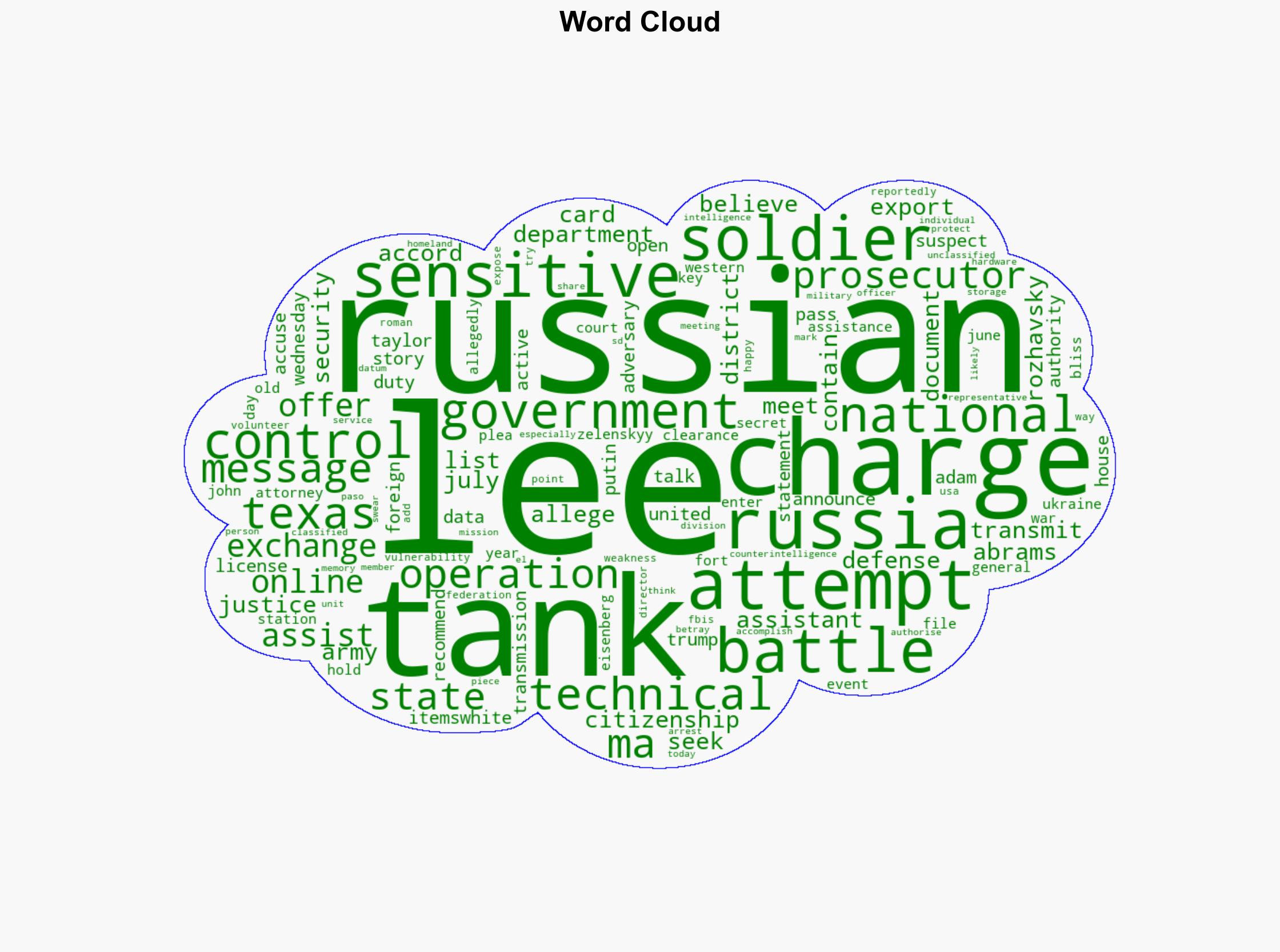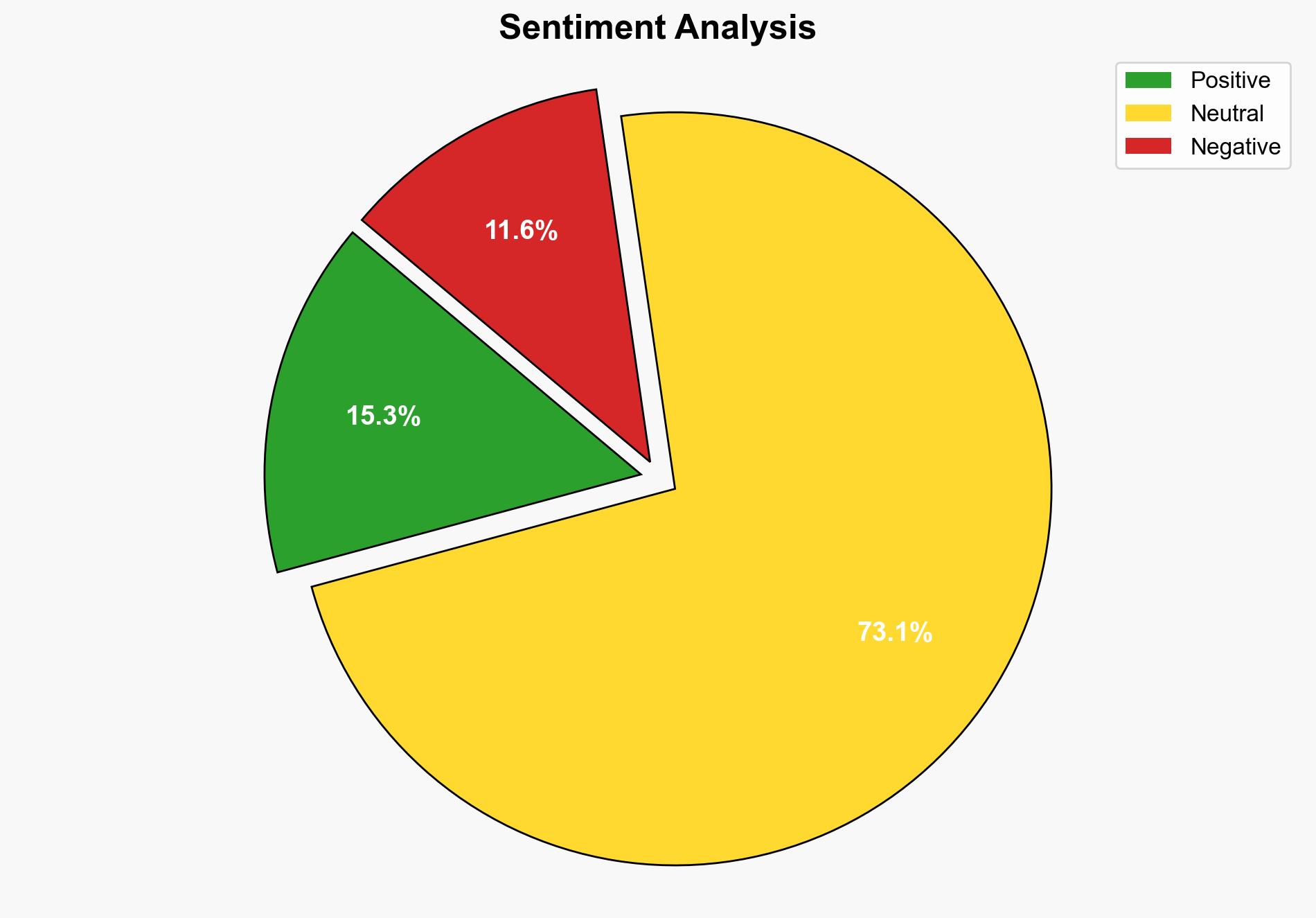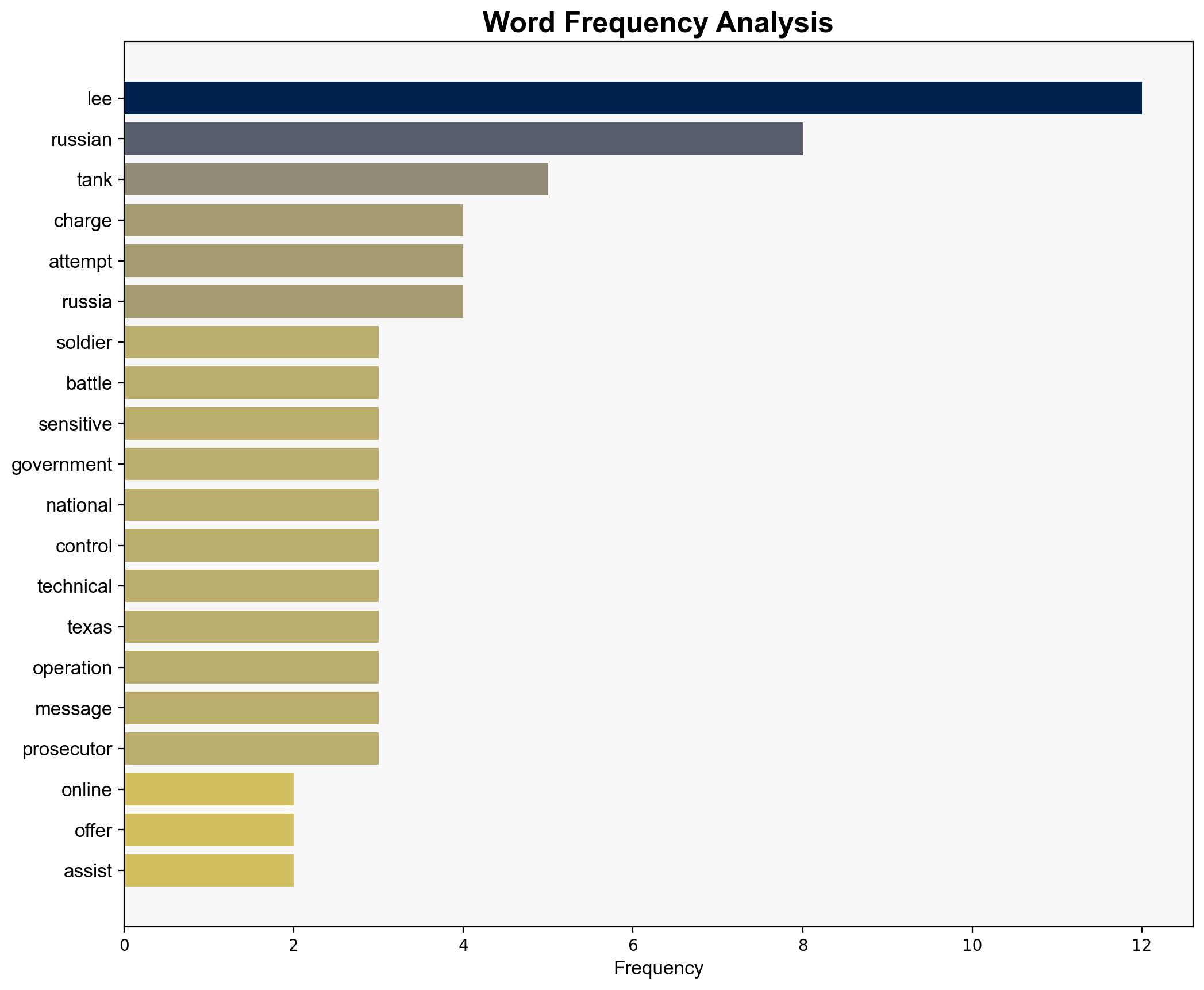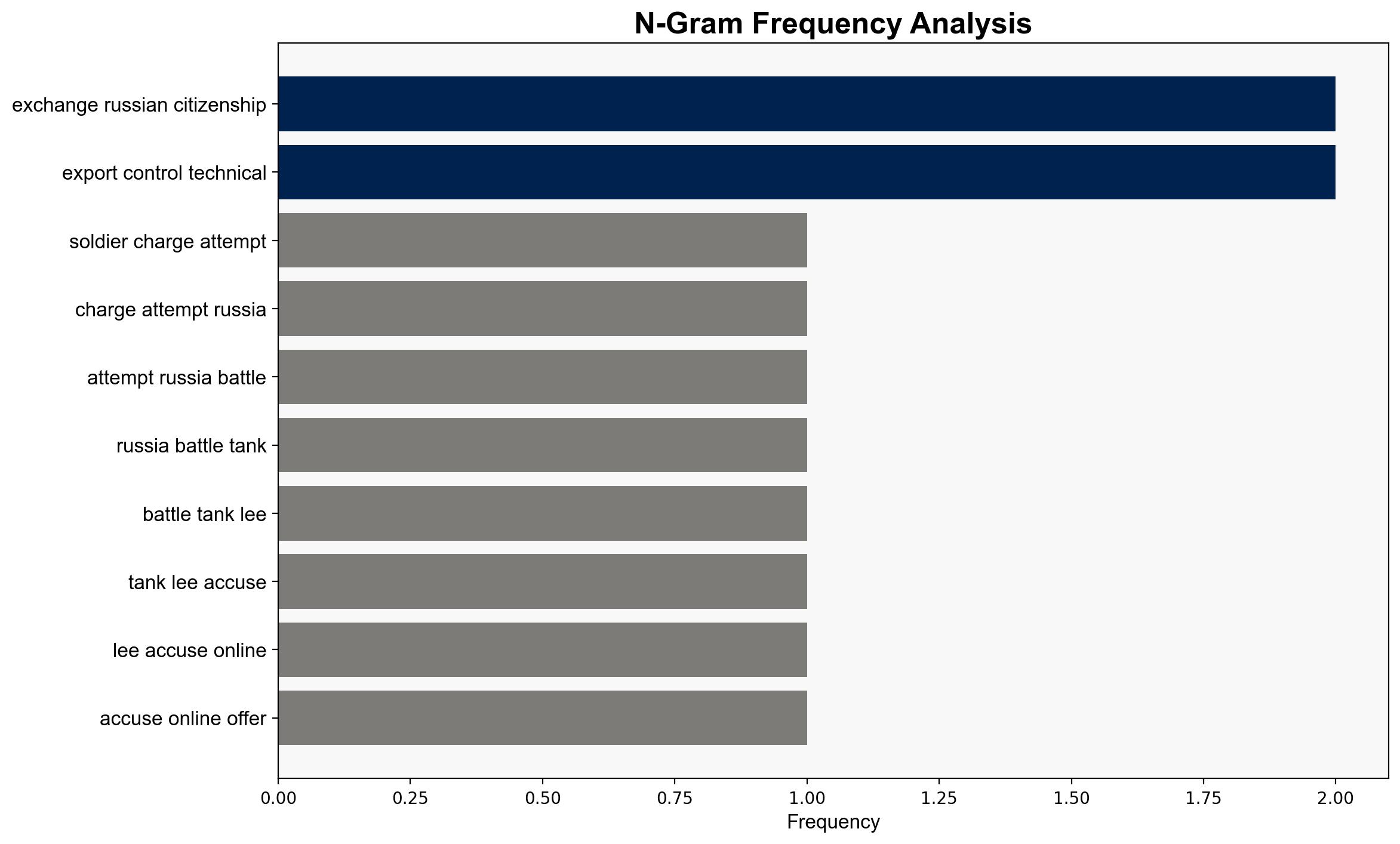US soldier charged with attempt to provide Russia with battle tank info – Al Jazeera English
Published on: 2025-08-07
Intelligence Report: US soldier charged with attempt to provide Russia with battle tank info – Al Jazeera English
1. BLUF (Bottom Line Up Front)
The most supported hypothesis is that Taylor Adam Lee acted independently, motivated by personal gain or ideological alignment, rather than as part of a broader espionage network. Confidence level: Moderate. Recommended action: Enhance counterintelligence measures at military bases and conduct a thorough investigation into Lee’s communications and potential contacts.
2. Competing Hypotheses
1. **Independent Actor Hypothesis**: Taylor Adam Lee acted alone, driven by personal motives such as financial gain or a desire for Russian citizenship. This hypothesis is supported by the lack of evidence indicating collaboration with other individuals or groups.
2. **Network Involvement Hypothesis**: Lee is part of a larger espionage network aimed at infiltrating the US military. This hypothesis considers the possibility of Lee being a small part of a coordinated effort to gather intelligence on US military capabilities.
Using the Analysis of Competing Hypotheses (ACH) 2.0, the independent actor hypothesis is better supported due to the absence of corroborating evidence for network involvement and the personal nature of Lee’s alleged communications.
3. Key Assumptions and Red Flags
– **Assumptions**: The independent actor hypothesis assumes that Lee had no external coercion or support. The network involvement hypothesis assumes an organized effort to exploit Lee’s position.
– **Red Flags**: The lack of detailed information on Lee’s motivations and the absence of evidence linking him to a broader network are significant gaps. The assumption that Lee acted alone could overlook potential accomplices.
– **Cognitive Bias**: Confirmation bias may lead analysts to favor the simpler independent actor scenario without fully exploring network possibilities.
4. Implications and Strategic Risks
– **Geopolitical**: If part of a network, this incident could indicate a broader Russian strategy to infiltrate US military operations, escalating tensions.
– **Cybersecurity**: Potential vulnerabilities in military communication and data protection protocols could be exploited.
– **Psychological**: The incident may affect morale within the military and public trust in national security measures.
5. Recommendations and Outlook
- Conduct a comprehensive review of security clearance protocols and enhance vetting processes for personnel with access to sensitive information.
- Implement regular counterintelligence training and awareness programs for military personnel.
- Scenario Projections:
- Best Case: Lee acted alone, and enhanced security measures prevent future incidents.
- Worst Case: Discovery of a larger espionage network, requiring extensive counterintelligence operations.
- Most Likely: Lee acted independently, but the incident prompts necessary security reforms.
6. Key Individuals and Entities
– Taylor Adam Lee
– Roman Rozhavsky
– John Eisenberg
7. Thematic Tags
national security threats, cybersecurity, counter-terrorism, regional focus





